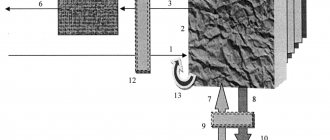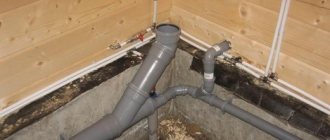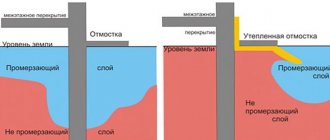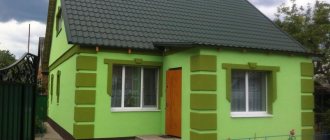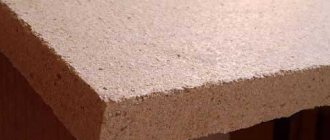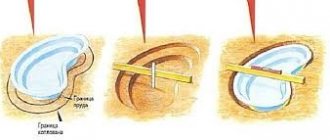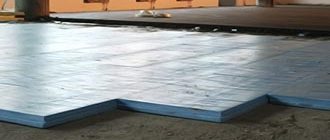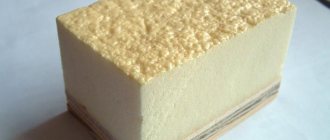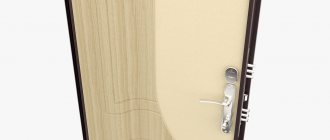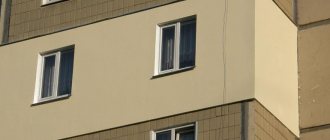Polyurethane foam is one of the most common synthetic materials. Due to its air-cavity structure, it is used as a filler for furniture, mattresses, toys, and car seats. There are two ways to produce it: casting products from polyurethane foam or cutting them from pre-cast blocks.
The main area of application of polyurethane foam is the production of building materials, for example, SIP panels with OSB linings, plywood, cardboard, metal, and plastics. Such products are characterized by:
- low thermal conductivity and high sound insulation;
- low flammability;
- steam and water resistance;
- resistance to aggressive environments, mold, rodents and insects.
Production of single PPU panels
Lines for the production of SIP panels vary in the number of units produced, the material of the linings, and the method of supplying polyurethane foam. In any case, the technological process will require a high-pressure foam filling machine and a mold for each standard size of the resulting products. The latter is a rigid metal structure in which two outer layers are laid, and the space between them is filled with liquid PU foam components.
In molds intended for single production of SIP panels, the method of pouring future insulation is used. A bottom layer of material (for example, OSB) is installed in the mold; its folding walls are lined with polyethylene or lubricated with an adhesive mixture. Using a high-pressure filling machine, it is manually filled with liquid components (polyol and isocyanate). Their number is calculated based on the size and thickness of the resulting slab.
Next, the top layer of the lining is placed in the mold, after which it is closed with special locks that limit the change in size of the resulting product during polymerization. The process of foaming the mass takes about 30 minutes, after which the mold is separated, and the product is sent for complete hardening. The required strength gain is achieved after 24 hours.
When manufacturing PPU panels with a metal lining, it is necessary to include heated pressure plates in the design of the molds or have another possibility of heating it. An adhesive composition is applied to the heated metal to enhance adhesion to the polymer. The process requires mandatory pressing to maintain the standard dimensions of the future product after polymerization.
End of work
After finishing spraying work, you must turn off the equipment.
4.1. The sequence of turning off devices when operating from a 380V network:
4.1.1. Close the area on the spray gun (tighten the two screws on the bottom of the gun). Close the air supply valve to the spray line (on the hose).
4.1.2. We turn off the dispenser, hydraulic system, heating system by turning off the temperature indicators.
4.1.3. We transfer the dispenser from spraying mode to circulation mode. We close the air supply to pneumatic pumps.
4.1.4. We move the hydraulic cylinders to the upper position by pressing the Park button on the screen.
4.1.5. Important
: Turn off the stabilizer only after turning off the Dispenser.
4.1.6. Turn off the dehumidifier.
4.1.7. Turn off the compressor.
4.1.8. When all devices are turned off manually, we transfer the electrical machines to the inactive position.
4.1.9. We disconnect from the power source (380V), and after that we pull out the plug from the socket inside the machine.
4.1.10. We clean and lubricate the gun, carefully wind up the hose. Watch the video instructions for disassembling and cleaning the gun.
4.2. The sequence of turning off devices when working using a generator:
4.2.1. When turning off the blood pressure, give it a chance to cool down (4 minutes of cooling is set in the program).
4.2.2. Turn off the mass.
4.2.3. The sequence of turning off all devices after work involving an electric generator differs only in turning off the generator after all other devices.
We turn off the generator through the menu on the SHUE screen.
After 4 minutes the screen will automatically go dark. We turn the toggle switch on the outer wall of the cabinet into an inactive state. Press the mass button. Open SHUE.
We turn the toggle switch inside the cabinet into an inactive state. We close the closet. We transfer the machines of all devices to an inactive state. We assemble the cooled exhaust system and remove the grounding system.
Hydropresses
Manufacturers of PPU panels use more advanced equipment to increase the number of products. Thus, kits with hydraulic presses make it possible to produce several products simultaneously. In this case, the wooden frames of future products are assembled in advance and installed between two layers of coverings on roll-out press carts equipped with carpet-type electric heaters. The restrictive strips included with the device can also serve as a frame.
After installation inside all carts with frames, pressing and heating of the lower surfaces of the products occurs. The upper thrust surface of the press serves as a limiter for the upper cart, and the lower surface of the latter serves as a closing plane for the lower cart. Pressing is necessary in order to withstand the pressure of expanding polyurethane foam. After heating to the required temperature, liquid components are supplied through the end holes of the frames by injection using a filling machine. It is equipped with a self-cleaning head and is equipped with electronics for dosing, mixing and feeding components.
Hydropresses allow you to simultaneously produce PPU panels and prepare the next set for pouring. The polymerization process lasts 30-40 minutes (depending on the dimensions), which allows you to prepare another batch. For example, the PPU-3/4 press ensures the preparation of the next two during the production of a pair of products.
Household device PPU FOAM-mini reusable
According to the NST price catalog dated March 23, 2020:
- the price of a refilled (10 kg of component “A” Izolan A-131 and 10 kg of component “B” isocyanate) household kit for self-spraying polyurethane foam is 30,060 rubles.
- You can buy an unfilled (empty) FOAM mini B2 to fill the raw materials later for RUB 23,580.
- We offer a double refill kit in the amount of 20 kg of isocyanate (component B) and 20 kg of polyol (component A) at a price of 12,588 rubles.
Basic delivery set of unfilled PENA-mini B2 for do-it-yourself insulation with polyurethane foam:
- sprayer with spare parts kit;
- Cylinder “A” and cylinder “B” with flow and pressure regulators;
- Hoses “A” and “B” 3m each;
- Compressed air supply hose from the compressor, 3m;
Additionally, a small household compressor with a capacity of 150 l/min is required. It’s not difficult to buy or get one now. Perhaps friends, neighbors, or relatives have such a compressor.
Due to the pressure of compressed air entering through the regulators into the containers with the components, they are dosed and supplied to the sprayer. Both components then enter a static mixer. Thanks to the complex internal geometry of the mixer, the raw materials are well mixed while passing through it.
The mixed system is then atomized using compressed air through a special static mixer tip. Polyurethane foam expands quickly and forms a seamless thermal insulation coating.
Household device PENA-mini rechargeable . After the components run out, you just need to add raw materials to the container and continue working. Do-it-yourself insulation of 1 m 2 with a thickness of 50 mm takes 1 minute!
Characteristics of the resulting polyurethane foam coating
- density - 35 kg/m3;
- thermal conductivity coefficient - 0.02 W/m;
- at least 98% of closed cells;
Application of household reusable polyurethane foam cylinders PENA-mini
For self-insulation:
- verandas, attics, walls and roofs of country houses and dachas;
- balconies, loggias;
- metal containers, garages and small shopping pavilions;
- gaps, cracks, cavities and joints in all construction applications;
- along the perimeter of windows and doors, at the junction of walls and ceilings;
- in the manufacture and repair of yachts, boats, trailers and refrigerators;
- for insulating and sealing channels and connections;
- for replacement or repair of insulation of refrigeration chambers;
- as a sealant when laying utility lines;
- In other cases, when it is necessary to quickly and efficiently do sealing and/or insulation with polyurethane foam with your own hands.
To solve professional insulation problems, we offer equipment for spraying polyurethane foam of the PENA series.
Technical characteristics of PENA-mini:
Large-scale production
Factories and enterprises for the production of polyurethane foam sandwich panels are equipped with powerful lines with high productivity, for example, for the production of roofing structures with metal linings. The technological process includes unwinding metal from rolls, profiling in special rolls, applying an adhesive composition (primer), heating the outer layer to enhance adhesion to polyurethane foam. Components are filled automatically using powerful high-pressure foam filling machines. When pressing, the shape of the press completely matches the profile of the finished product, and the pressing force ensures that its dimensions are maintained. After polymerization and hardening of the mass, such products require cutting according to available standard sizes.
How to insulate a house yourself. DIY polyurethane foam spraying
If you are faced with the task of insulating your home, and hiring a team of professionals is too expensive, then there is a way out - to do the insulation yourself. In this article, we will, of course, consider the option of insulation only with polyurethane foam, as one of the best insulation materials today.
Why polyurethane foam?
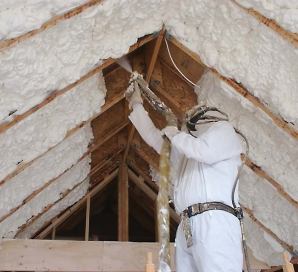
- Polyurethane foam has one of the lowest heat transfer coefficients, it is 25 times warmer than brick, 4 times warmer than mineral wool and 3 times warmer than polystyrene foam
- PPU is durable, service life more than 30 years
- Polyurethane foam can be used in the temperature range from minus 100 to plus 100 degrees Celsius;
- Resistant to microorganisms, mold and fungi;
- High adhesion (sticking) to any surface and seamlessness - add advantages compared to traditional insulation (mineral wool, polystyrene foam, extruded polystyrene);
- It does not emit anything, does not accumulate dust and microbes, does not itself turn into dust particles, so it is widely used in our lives - all refrigerators are insulated with it, pillows and mattresses are made from it, and much more.
You can read more about polyurethane foam and why it is better than other insulation materials here
And you can read about the disadvantages of mineral wool or polystyrene foam in our other articles “Polyurethane foam or mineral wool - what to choose?” and “Disadvantages of expanded polystyrene.”
So, if you decide to insulate your house with polyurethane foam (PPU), then you will need a PPU installation, or in other words, a device for spraying polyurethane foam, as well as the components from which this polyurethane foam is obtained.

As for the components, they can be ordered from us via this link.
What you need to know to choose the necessary material for spraying polyurethane foam: – The flammability group of polyurethane foam, the lower it is, the better, and the more expensive the materials for spraying. Combustible polyurethane foam of flammability group G4 or G3 can be coated on top with fire-retardant paint. – Density. The consumption of components per square meter depends on it. If you are insulating exterior walls or foundations, then choose 30th density components. If you are planning insulation inside, for example an attic or a frame house, then 10th density polyurethane foam is suitable for you.
To calculate the required number of components, you can use the following formula: Actual material consumption = (Density of free foaming) x (application area) x (thickness of the thermal insulation layer in centimeters) x 0.01 x 1.3 where 1.3 is a correction factor that takes into account overconsumption material under real application conditions. For example: It is necessary to insulate a wall of 100 sq.m. with a layer of 4 cm. Components used: Himtrust 30 density. Required number of components = 30 x 100 x 4 x 0.01 x 1.3 = 156 kg of components.
Let's say you've decided on the components. Now you need to select the equipment.
There are several options available on our website. How to choose among them? You can, of course, compare by performance, pressure, heater power and hose length. But we made a more revealing comparison - based on the cost per square meter of insulation. The data is presented in the table:

In the calculations, polyurethane foam with a density of 20 kg/m3 was used. and a set of equipment along with the necessary compressor.
What conclusions can be drawn from the table below? 1. If you need to insulate your house with an area of up to 100 square meters and you do not want unnecessary problems, then you are better off choosing Polynor or its analogues.
2. If you have more than 100 square meters, or you need to use polyurethane foam of different densities, and also if you just want to get better insulation , then you need to choose PROton Home. This installation is also used by professional teams for spraying polyurethane foam in small areas where it is inconvenient or economically impractical to travel with bulky equipment. For example, insulating a balcony or loggia in an apartment building.
3. If you have plans, in addition to insulating your home, to also insulate the house of a neighbor, or maybe more than one, or you have large industrial premises, then you need to choose PROton AC.
4. You are considering installation as an opportunity to earn extra money on insulation, and you live in a small village, or you simply doubt whether such a business will work for you. In this case, it is better to choose PROton Air or PROton E-2. These devices are designed for professional spraying of any polyurethane foam on any area.
5. If you are interested in polyurethane foam as a business, you plan to offer high-quality insulation services to your clients, and maybe waterproofing with polyurea, then you are better off choosing professional equipment, for example, buy PROton E-5 (E-5s) and PROton A-2. In addition, high-pressure apparatus allows you to save up to 10% on material compared to other types of PPU installations.
How to organize your production
If you have the appropriate equipment, manufacturing sandwich panels can become a profitable business. First, you need to buy a machine for pouring polyurethane foam and molds of the required sizes. After establishing sales, it is logical to purchase more productive equipment, for example, a hydraulic press for the simultaneous production of 4 panels. A wide selection of self-produced filling machines, molds and accessories for them is presented on the website of our company. We are ready to manufacture equipment at an affordable price to suit your goals and objectives.
Let's look at a few of the most common small objects.
1. The smallest object from 5 to 20 sq.m.
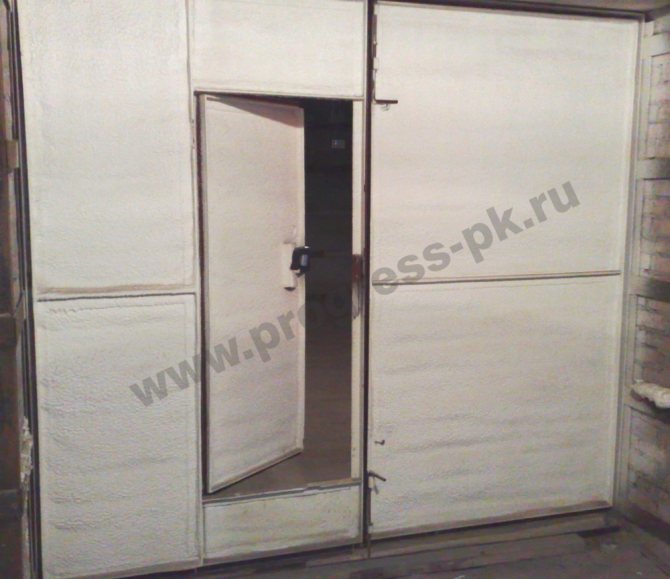
2. Small object from 20 to 50 sq.m.
3. Small medium object from 50 to 200 sq.m.
4. Average object from 200 to 500 sq.m.
5. Medium large object from 500 to 1000 sq.m.
6. Large object from 1000 sq.m.
From our own practical experience: every year, each of our full-time foam spraying specialists earns up to 700,000 rubles.
In this case, operators spend no more than four months in total at the sites, and use the rest of the time at their own discretion.
If you apply lightweight polyurethane foam with a density of 15 kg/cub.m., the profit margin will increase. However, lightweight polyurethane foam is not used everywhere; there are limitations.
Of course, sometimes there will be large objects with an area of more than 1,000 sq.m. In this case, an assistant of the lowest qualifications will be required to perform work of the “bring-and-give” type.
Recently, pouring polyurethane foam into the ventilation gaps of brickwork of houses has become in demand.
Attention! Not to be confused with penoizol! Penoizol contains a large amount of water, which remains in the material for a very long time, negating the thermal insulation properties of penoizol. In addition, when drying, penoizol shrinks and cracks. Penoizol can be used as insulation only in the form of pre-dried, i.e. DRY(!) blocks wrapped in plastic film. For a long time, this was done until it occurred to someone to make money on people’s gullibility and illiteracy.
Pouring Penoizol into the interstitial space in the fall on the eve of cold weather is unacceptable. The water will not have time to evaporate, the wet “insulation” will not heat and will collapse from the frost.
The Progress series installations can also carry out waterproofing work with polyurea. This new material is just gaining its position in the Russian Federation, but it has brilliant prospects. The experience of using polyurea in Europe clearly shows this. There the demand for it is growing every year.
Cost of materials per 1 sq. m. depends on the thickness of the application, 1.5 mm or 3 mm. With a polyurea layer thickness of 1.5 mm, the cost of the coating is 500 - 600 rubles, with 3 mm - 1,000 - 1,500 rubles. The cost of work starts from 1,800 rubles/sq.m.
Compact and powerful equipment of the Progress series is used for spraying polyurethane foam onto any objects without restrictions. Comprehensive heating of components and supply hoses is provided for operation in the cold season.
The minimum batch of components is 100 kg of rigid polyurethane foam system, cost 28,000 rubles. This amount is enough for about 60 sq.m. with a PPU layer thickness of 3 cm.
Characteristics of polyurethane foam
PPU is popular not only because applying polyurethane foam with your own hands is a fairly simple process. This material has excellent characteristics:
- thermal conductivity coefficient 0.019-0.028 W/m*K;
- vapor permeability tends to zero;
- density 30-60 kg/m. cube;
- does not burn - according to GOST 12.1.044 it is classified as low-flammable materials;
- does not absorb moisture - the percentage of closed cells is from 85 to 95.
The effectiveness of floor insulation with expanded clay under a screed is lower than with foam plastic or mineral wool.
This also applies to the insulation of frame walls with expanded clay. In addition, it is quite heavy.
It has good adhesion (adhesion) to all materials. Thanks to its almost complete waterproofness, polyurethane foam protects metals from corrosion. In the characteristics of polyurethane foam there is also such a thing as start time. This is the number of seconds it takes for foaming to occur. The start time for different types of work is slightly different. For horizontal surfaces, the foaming time should be about 5-10 seconds. For ceiling insulation, this period is reduced to 3 seconds.
